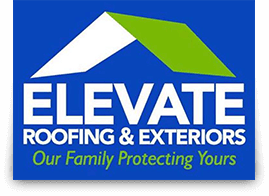Flashing protects vulnerable parts of the roof, such as the valleys, vent pipes and dormers. As one of the leading roofing companies in Collier County, Elevate Roofing and Exteriors shares a look at this important roofing component and explains why you should take action if it fails.

What Is Flashing?
Flashing is made of metal or rubber and is designed to prevent water infiltration in vulnerable areas of the roof. There are several types of flashing:
- Valley Flashing — Valley flashing features an inverted “T” profile and is used to protect roofing valleys from cross-infiltration, thanks to its vertical fin, which acts as a barrier.
- Continuous and Step Flashing — Both are used to protect dormers and similar structures on the roof. Continuous flashing is installed on the side parallel to the roof edge, while step flashing is installed on the sloped side, following the shingles in a stepped fashion.
- Drip Edges — Drip edges are strips of metal that line the roof edge. Their inverted “L” profile prevents rainwater from seeping into the roof deck.
- Rubber Boots — Also known as vent pipe flashing, rubber boots are cone-shaped pieces made of rubber. They are installed at the base of vent pipes, with the narrow end trimmed to fit the pipe. Sloped and flat bases can be used, depending on the roof type.
Common Causes of Flashing Failure
Flashing is exposed to the same conditions as the roof. High winds and extreme temperatures can cause flashing to become worn down, just as they can cause wear and tear to the shingles. Common indicators of flashing failure include dislodged, misshapen or missing sections. Rubber boots can develop cracks from years of exposure to the elements.
Another cause of flashing failure is the use of substandard metal strips, as well as incorrect installation techniques. This is common among inexperienced roofers; it’s one reason why storm damage roof repair should always be left to certified roofing contractors.
How to Avoid Flashing Failure
Keep an eye on your roof’s condition, including the flashing, with regular roofing inspections. If you see flashing that has any of the signs described above, call a roofing professional for repairs, ideally before the summer season begins. Consider investing in more durable options such as copper, and make sure your roofing contractor offers workmanship warranties in case of installation errors.
Elevate Roofing and Exteriors is your leading provider of residential roofing services. Give us a call at (239) 317-3117 or fill out our contact form to schedule an appointment.






